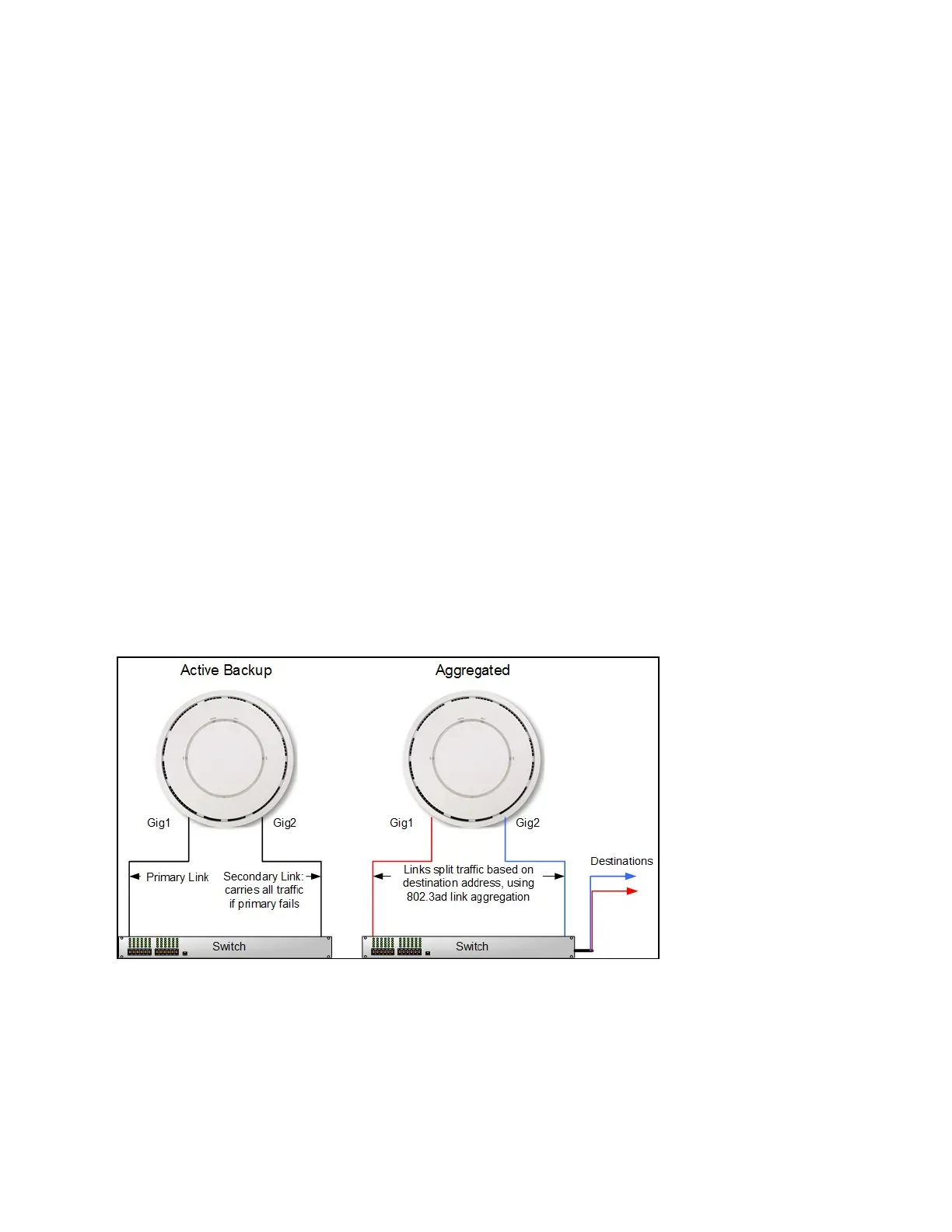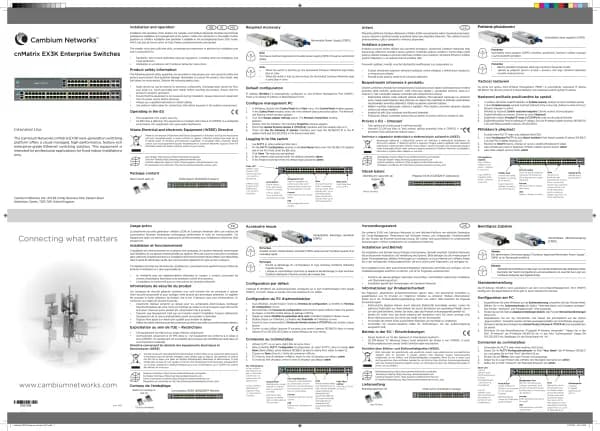Cambium Networks XMS Cloud handleiding
Handleiding
Je bekijkt pagina 10 van 90

10 | Help Guide | XMS Cloud
Adavanced Settings
To configure more settings, click Show Advanced link.
l Ethernet — These settings on the AP’s Ethernet ports are usually left at the default settings. Auto Negotiate
allows the Access Point to negotiate the best transmission rates automatically. If you disable Auto Negotiate, you
must define the Duplex and Speed options manually (otherwise these settings are not available). MTU: the
MaximumTransmissionUnitsize. This is the largest packet size (in bytes) that the interface can pass along. Note
that for APs such as the XD4-240 with 2.5 GHz ports, the 2.5 GHz speed can only be set via auto-negotiation—
thus Auto Negotiate should always be used with these APs.
l Trunking traffic to Gig2 — This option is not used by most customers. It is used in the special case where you
want to isolate the traffic of a particular VLAN (and its associated SSID) by sending it to the Gigabit Ethernet port
2 on profile APs. For example, you might want to isolate Guest trafficfrom enterprise traffic as part of PCI
(PaymentCard Industry) compliance.
To trunk a VLAN to Gig2, select YES and enter the VLAN number. Only one VLAN can be separated in this way—its
tagged traffic will use Gig2, while untagged traffic will be sent out of both ports. Gig1 will be used for management
traffic and production (enterprise) networks. Note that the VLAN selected here must be in use by at least one
SSID. When using this option, you must ensure that the Gig1 and Gig2 ports are connected to different networks,
generally on separate switches.You should reboot APs in thisprofile to ensure that these settings will take effect.
Also see Limit the DHCP Pool to a single SSID, located above in the DHCP Pool settings.
l LACP Support for Access Points — This feature is for APs with more than one Ethernet port. Note that to use this
feature, the network switch must also support 802.3ad.
n By default, the Gig1 and Gig2 ports function in Active Backup mode (illustrated below). If Gig1 fails, the
Access Point automatically uses Gig2 instead—otherwise Gig2 is passive.
n If you enable LACP (Link Aggregation Control Protocol, defined in IEEE 802.3ad), both ports are used and
they act as a single logical interface, increasing link speed to the network. A load balancing algorithm
balances traffic across the ports. If a port fails, the connection degrades gracefully — the other port still
transmits. LACP cannot be used at the same time as Trunking traffic to Gig2 (above).
l Location Reporting —Set up APs to send data to an analytics server.
If you are using an analytics server, such as Euclid or the Xirrus Position Server (XPS), use this Location Services
section to set up Access Points to send collected data to the server on a regular basis. Cambium Xirrus APs can
capture visitor analytics data and upload it to a server, eliminating the need to install a standalone sensor
network. This data can be used to provide information such as customer traffic and location, visit duration, and
frequency.
When Location Reporting is enabled, the AP collects information about stations, including the station ID and
manufacturer, time and length of the visit and related time interval statistics, and signal strength and its related
Bekijk gratis de handleiding van Cambium Networks XMS Cloud, stel vragen en lees de antwoorden op veelvoorkomende problemen, of gebruik onze assistent om sneller informatie in de handleiding te vinden of uitleg te krijgen over specifieke functies.
Productinformatie
| Merk | Cambium Networks |
| Model | XMS Cloud |
| Categorie | Niet gecategoriseerd |
| Taal | Nederlands |
| Grootte | 13480 MB |







